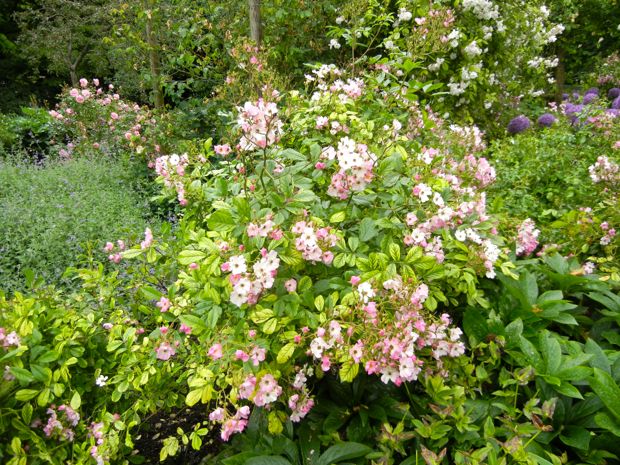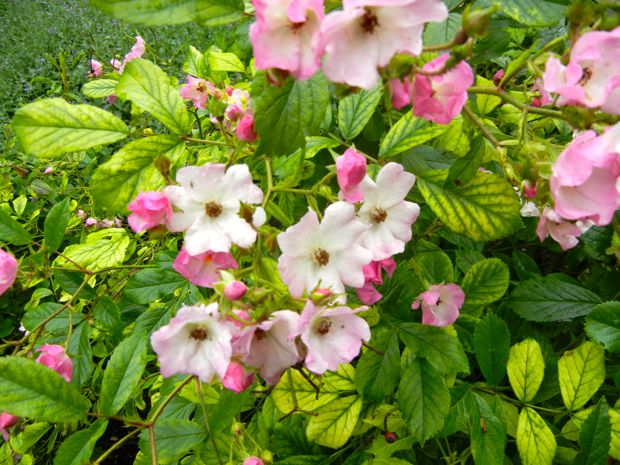Rosa setigera, also known as the American Wild Climbing Rose, is a captivating member of the Rosaceae family of plants. Native to Central and Eastern North America, this rose variety goes by several common names, including Sunshine Rose, Prairie Rose, Illinois Rose, Michigan Rose, and Climbing Rose. The name “setigera” originates from Latin, with “seti” meaning “bristle” and “gero” meaning “bearing,” alluding to the presence of bristles on the plant.
Rosa setigera displays an enchanting array of features. Its glabrous stems grow in an arching or trailing fashion, with the trailing branches having the ability to root upon contact with the soil, effectively allowing the plant to propagate itself. The rose is adorned with dark green, glossy foliage that is palmately divided and serrated along the margins, adding an elegant touch to its appearance. In early to midsummer, Rosa setigera bursts into bloom, showcasing exquisite pink flowers that are typically single with five delicate petals. These charming blossoms emit a mild fragrance, enticing pollinators to visit. After flowering, the plant forms attractive red rose hips, adding further visual interest. As autumn arrives, the foliage of Rosa setigera undergoes a stunning transformation, turning shades of red or purple and providing a vibrant splash of color to the garden.

How to Grow Rosa setigera:
To ensure the successful growth and abundant flowering of Rosa setigera, consider the following guidelines:
- Sun and Soil Requirements: Plant Rosa setigera in a location that receives ample sunlight, preferably in full sun or partial shade. The rose thrives in average to medium moisture levels and well-drained soil. A sunny position will promote optimal flowering and enhance the overall health of the plant.
- Watering and Disease Prevention: Water Rosa setigera in the morning and avoid overhead watering. This method of watering helps keep the foliage dry, reducing the risk of disease, particularly fungal infections. Consistent moisture is essential, so ensure the soil is adequately hydrated without becoming waterlogged.
- Pruning and Training: Prune Rosa setigera in early spring to remove any dead, damaged, or crossing branches. Training the climbing rose along a trellis, arbor, or other suitable support structure will enhance its natural growth habit and allow it to reach its full ornamental potential.
- Fall Color and Rose Hip Care: Enjoy the visual spectacle of Rosa setigera’s autumn foliage as it transitions to shades of red or purple. Embrace the beauty of the rose hips, which can persist well into winter, providing food for wildlife. Consider leaving them on the plant as a decorative element or collecting them for various culinary or decorative purposes.

Synonyms and Subspecies:
Rosa setigera is known by various synonyms, including Rosa rubifolia and Rosa fenestrate. It also encompasses different subspecies, such as Rosa setigera var. setigera, Rosa setigera var. tormentosa, and Rosa setigera var. serena.
With its captivating appearance, enchanting blooms, and hardy nature, Rosa setigera is a remarkable addition to any garden landscape. Whether adorning fences, climbing structures, or cascading from hanging baskets, this wild climbing rose brings beauty, fragrance, and a touch of wilderness to outdoor spaces. Embrace the allure of Rosa setigera and let its natural charm flourish, transforming your garden into a haven of botanical splendor.



